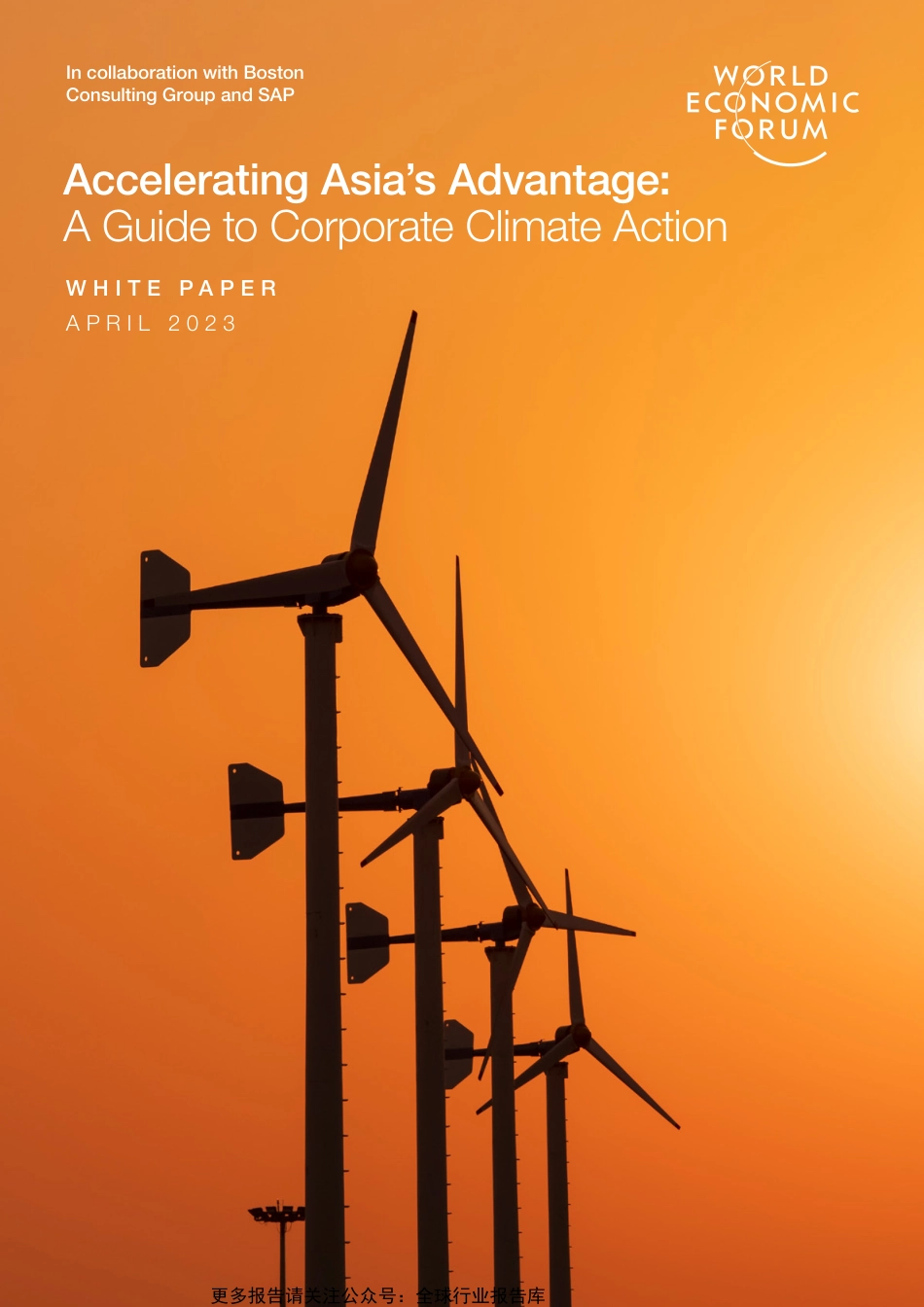Accelerating Asia’s Advantage: A Guide to Corporate Climate ActionW H I T E P A P E RA P R I L 2 0 2 3In collaboration with Boston Consulting Group and SAP更多报告请关注公众号:全球行业报告库Images: Getty Images, Unsplash© 2023 World Economic Forum. All rights reserved. No part of this publication may be reproduced or transmitted in any form or by any means, including photocopying and recording, or by any information storage and retrieval system.Disclaimer This document is published by the World Economic Forum as a contribution to a project, insight area or interaction. The findings, interpretations and conclusions expressed herein are a result of a collaborative process facilitated and endorsed by the World Economic Forum but whose results do not necessarily represent the views of the World Economic Forum, nor the entirety of its Members, Partners or other stakeholders.ContentsForeword 3Executive summary 41 The battle for net zero will be won or lost in Asia 51.1 Asia represents the world’s biggest opportunity 7 for positive climate results 1.2 The current response to the climate challenge is inadequate 71.3 Change won’t be easy as key challenges remain at both regional and corporate levels 81.4 Asia has much to lose in a climate emergency 102 It’s time to adapt to what’s to come and mitigate its effects 112.1 Adapting to a warmer world 112.2 Mitigating the rate of change 132.3 A single approach will yield great opportunities 132.4 Energizing a just transition 153 The corporate climate framework 203.1 What to do first: immediate actions 213.2 What good looks like: Zuellig Pharma drives impact through 22 transparent targets 3.3 Enabling transformation in the medium term 243.4 What good look...



